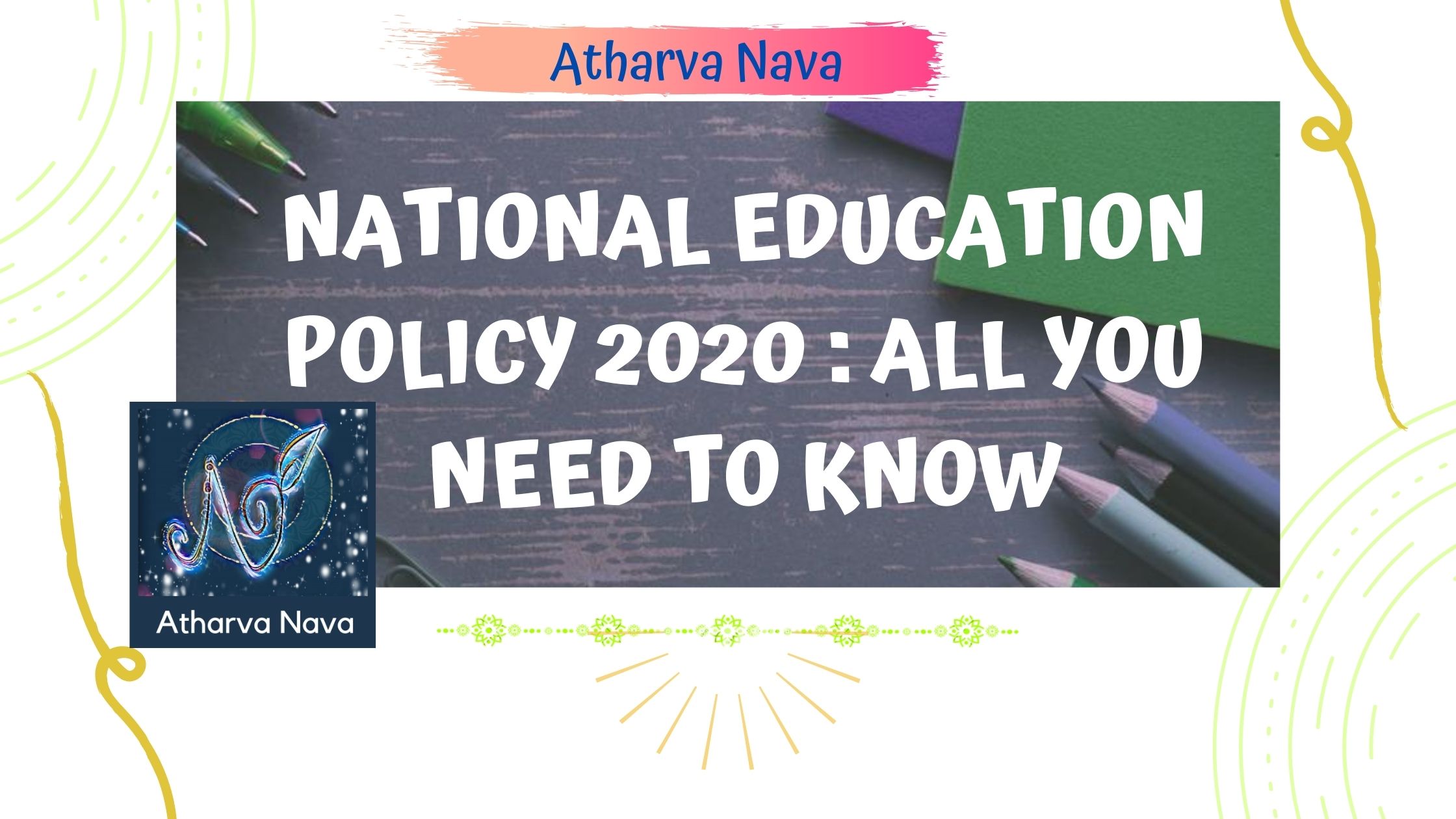Your cart is currently empty!

National Education Policy 2020: All You Need to Know About…

The Union Cabinet on Wednesday approved the New Education Policy and renamed the ministry of human resource and development as the ministry of education. The new policy would also see an overhaul of the system in place in higher education. Following the new education policy and reforms, India will achieve 50% Gross Enrollment Ratio by 2035, the ministry said.
The Union Cabinet on Wednesday approved the New Education Policy (NEP). One of the major decision, the Cabinet has renamed the Ministry of Human Resource and Development (MHRD) as the Ministry of Education.
“The Cabinet meeting is chaired by the Prime Minister Mr. Narender Modi,” said I&B Minister Prakash Javedkar. The decision of changing the name of the ministry was done as per the recommendations listed in the draft on new education policy, which suggested it to bring the focus back on education and learning.
The new policy would also see an overhaul of the system in place in higher education.
“As on date, we have different norms for deemed universities, central universities, for different individual standalone institutions. New Education Policy says that for reasons of quality, norms will be the same for all & not as per ownership,” said Amit Khare, Higher Education Secretary.
New Education Policy: Highlights
Outcomes of NEP 2020
* Universalisation from ECCE to Secondary Education by 2030, aligning with SDG4
* Attaining Foundational Learning & Numeracy Skills through National Mission by 2025
* 100% GER in Pre-School to Secondary Level by 2030
* Teachers to be prepared for assessment reforms by 2023
* Inclusive & Equitable Education System by 2030
* Board Exams to test core concepts and application of knowledge
* Every child will come out of School adept in at least one Skill
* Common Standards of Learning in Public & Private Schools
Major Reforms: School Education
Board exams will be low stakes & test actual knowledge instead of rote learning
Mother tongue to be a medium of instruction till 5th grade
Report cards will be a comprehensive report on skills and capabilities instead of just marks and statements
National mission to focus on basic literacy and basic numeracy
Major changes in the pedagogical structure of the curriculum with no rigid separation between streams
All separations between vocational and academic and curricular and extra-curricular will also be removed
* New National Curriculum Framework for ECE, School, Teachers and Adult Education
* Board Examination will be Low Stakes, Based on Knowledge Application
* Medium of Instruction till at least Grade 5, and preferably till Grade 8 and beyond in Home Language/ Mother tongue/ Regional Language
* 360-degree Holistic Progress Card of Child
* Tracking Student Progress for Achieving Learning Outcomes
* National assessment center – PARAKH
* NTA to offer Common Entrance Exam for Admission TO HEIs
* National Professional Standards for Teachers (NPST)
* Book Promotion Policy and Digital Libraries
* Transparent online self-disclosure for public oversight and accountability
* Universalization of Early Childhood Care Education (ECCE)
* National Mission on Foundational Literacy and Numeracy
* 5+3+3+4 Curricular and Pedagogical Structure
* Curriculum to integrate 21st Century Skills, Mathematical Thinking, and Scientific temper
* No Rigid Separation between Arts & Sciences, between Curricular and extra-Curricular activities, between Vocational and Academic streams
* Education of Gifted Children
* Gender Inclusion Fund
* KGBVs up to Grade 12
* Reduction in Curriculum to Core Concepts
* Vocational integration from Class 6 onwards
Use of Technology
* Use of Technology in
* Education Planning
* Teaching Learning & Assessment
* Administration & Management
* Regulation- Self Disclosure & Minimum Human Interface
* Increasing Access for Disadvantaged Groups
* Divyang Friendly Education Software
* e-Content in Regional Language
* Virtual Labs
* National Educational Technology Forum (NETF)
* Digitally Equipping Schools, Teachers, and Students
* Graded Autonomy: Academic, Administrative & Financial
* Phasing out Affiliation System in 15 years
* National Mission on Mentoring
* Independent Board of Governors (BoG)
* Single Regulator for Higher Education (excluding Legal and Medical)
* On-line Self Disclosure based Transparent System for Approvals in place of ‘Inspections’
* Common Norms for Public and Private HEIs
* Private Philanthropic Partnership
* Fee fixation within Board Regulatory Framework
* Public Investment in Education Sector to reach 6% of GDP at the earliest
Major Reforms: Higher Education
* 50% Gross Enrolment Ration by 2035
* Holistic and Multidisciplinary Education- Flexibility of Subjects
* Multiple Entry/Exit
* UG Programme – 3 or 4 years
* PG program – 1 or 2 years
* Integrated 5 year bachelor’s/Master’s
* M Phil to be discontinued
* Credit Transfer and Academic Bank of Credits
* HEIs: Research Intensive/ Teaching Intensive Universities and Autonomous Degree-Granting College
* Model Multidisciplinary Education and Research University (MERU)
* The present Education Policy was adopted in 1986 which have been continued till date that is for last 34 years
* The country got the education policy after 34 years
* The Union Cabinet, chaired by the PM himself, has approved the draft of National Education Policy today morning.
* The Cabinet has also accepted the proposal of changing the name of MHRD to Education Ministry.
* The vision of creating an education system that contributes directly to transforming the country, providing high-quality education to all, and making India a global knowledge superpower.
Evolution of Education Policy
* University Education Commission (1948-49)
* Secondary Education Commission (1952-53)
* Education Commission (1964-66) under Dr. D. S. Kothari
* National Policy on Education, 1968
* 42nd Constitutional Amendment, 1976- Education in Concurrent List
* National Policy on Education (NPE), 1986
* NPE 1986 Modified in 1992 (Programme of Action, 1992)
* T.S.R. Subramaniam Committee Report (May 27, 2016)
* Dr. K. Kasturirangan Committee Report (May 31, 2019)
Atharva Nava
Leave a Reply